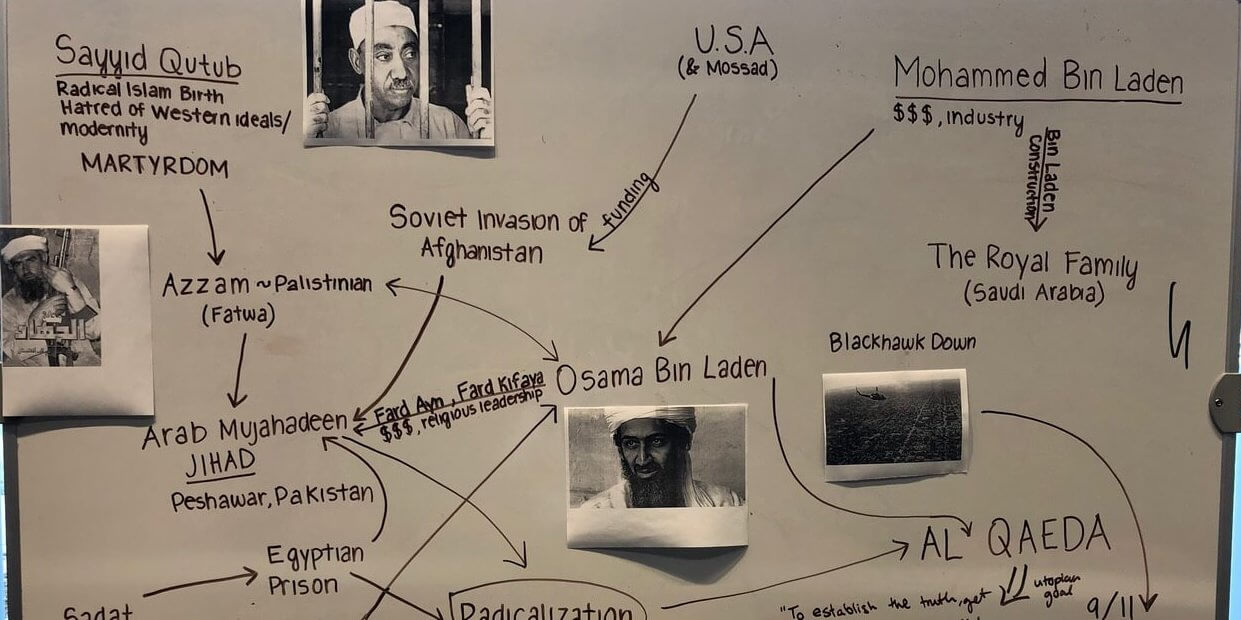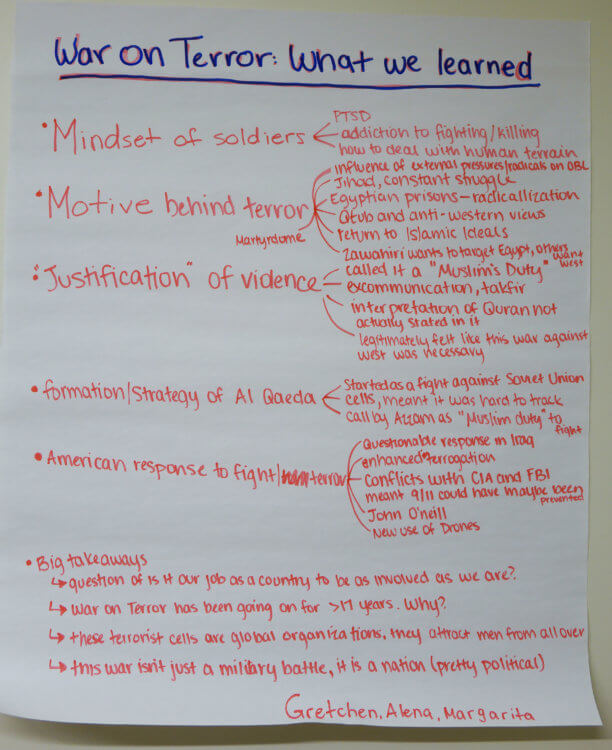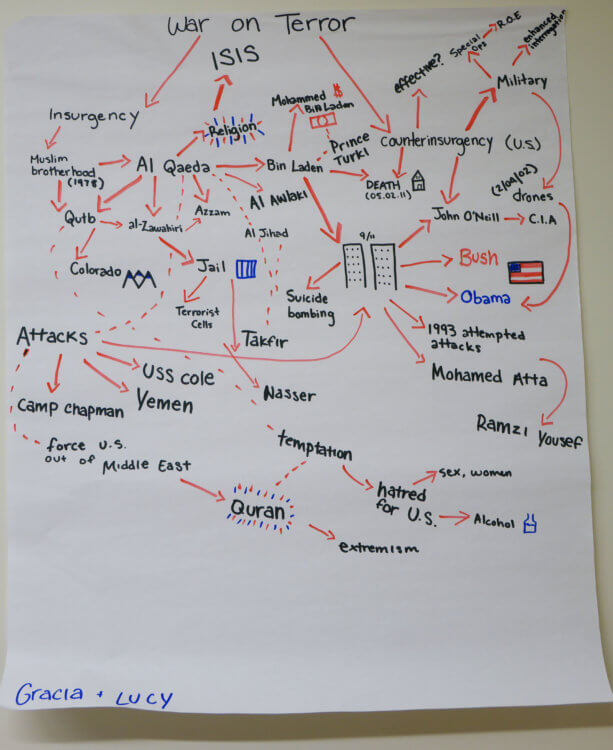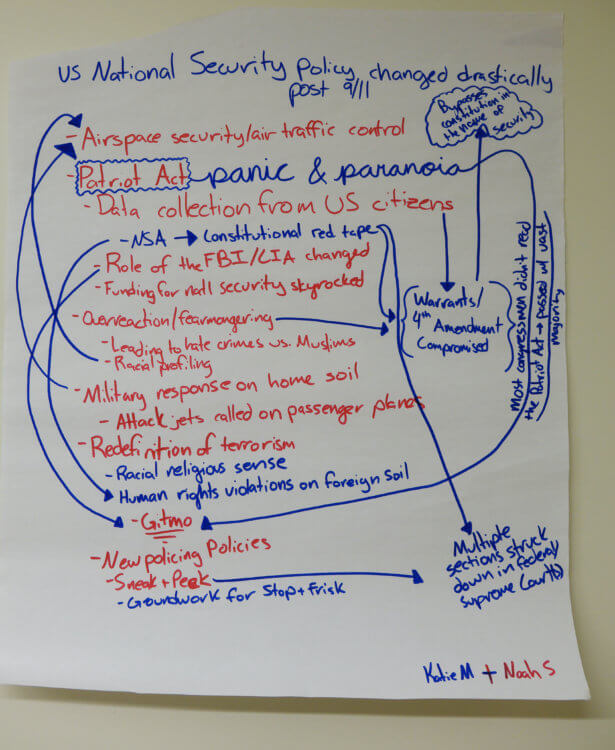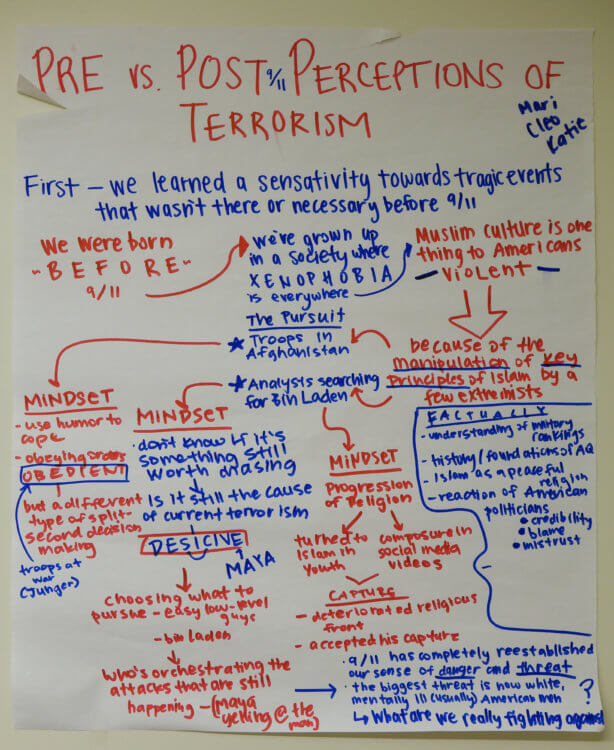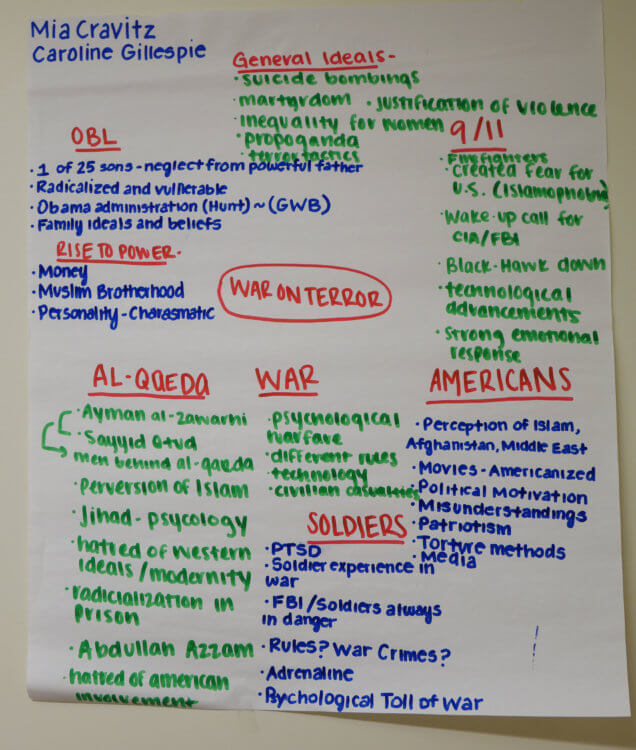“OK, everyone, “ I said to my class on the second to the last day of the term. “We are going to have a ‘pop’ final exam.” Gasps abounded from my students. “Well,” I said, “Here’s the good news. This isn’t going to count. I just want to see if you actually learned anything this term!”
By this point, the students had already written two formal papers, completed one project, completed multiple in-class assignments, had viewed multiple documentary films, and taken part in various lectures and class discussions since late August.
I knew that my students had been exposed to a lot of material, but what I really wanted to know was how much working knowledge they had of the subject matter. I then described the assignment: Work with partner, take poster paper and markers, and record for me in 15 minutes what you learned. I explained that they had total freedom to demonstrate their learning in any way they wanted to. Then, each group would be required to share their learning in a five-minute presentation to the class.
I’ve been teaching a class on the War on Terror since 2002. I love it. There is too much material to cover, but it is exciting to engage students in discussions about current and complicated world issues. As my students worked on this assignment, I was intrigued that no two groups of students approached this assignment the same way. To be sure, there were some common themes, names, terms, and concepts. But, I loved the creativity my students demonstrated. They worked quickly, writing things down. One started over half way through. Some included visuals and mind maps. Others listed things chronologically or ordered concepts thematically. By the end of the class, I was impressed by what the students could comfortably talk about with little or no preparation.
Here are some examples (click to view larger):
For the final project, I asked my students to take on any topic related to the War on Terror and put together a paper or presentation. Some kids created interactive Keynote or PowerPoint presentations. Two teams interviewed servicemen about their experiences. One team wanted to do a live presentation. A few wrote more traditional papers. A couple of groups created podcasts about the War on Terror. Here’s an example by Aly Gallagher, Mari Annest, and Katy Cmil on why students should study the War on Terror. [Podcast: Why students should study the War or Terror].
So, to answer my question: “What are we trying to do here?” The answer is simple. I want to support the development of critical and creative thinking in my students. I want them to learn how to work with others to take on big challenges. This class is comprised of Seniors, and it is truly amazing and humbling to see what they are capable of doing. The students at Colorado Academy rise to the challenge every day. They are self-starters. They are hungry to learn. But, what I appreciate most is the different approaches students take to solving problems. They have learned to play to their strengths and trust their instincts. I am envious of the colleges that will be lucky enough to have these students attend their institutions next year.
